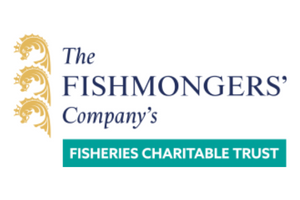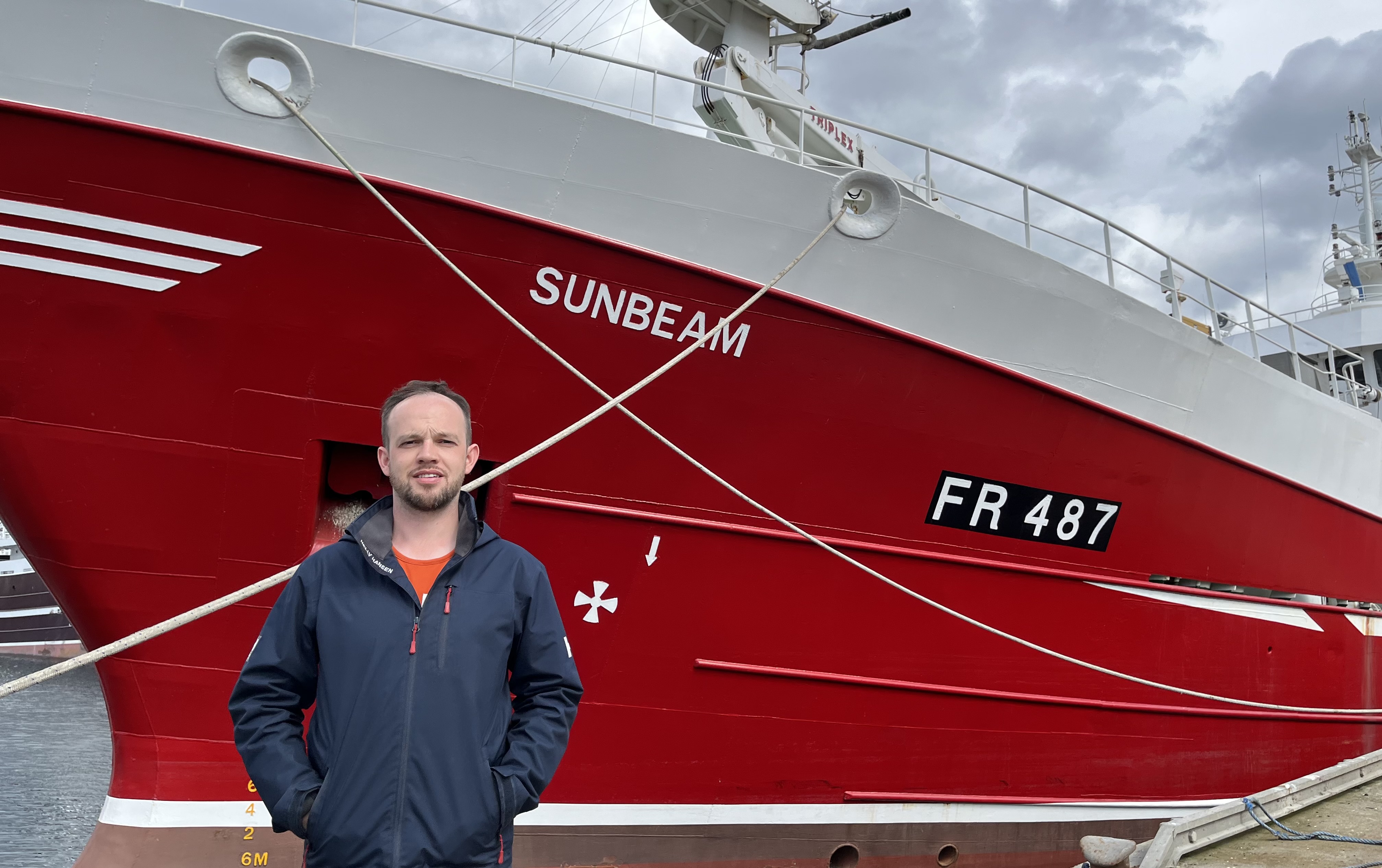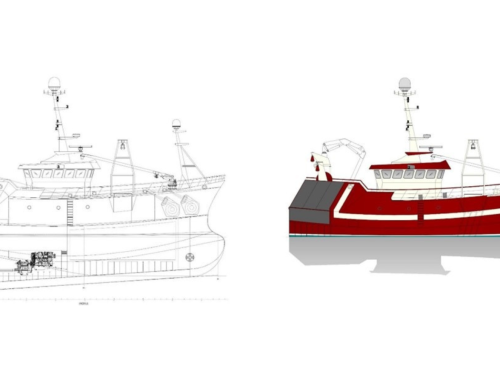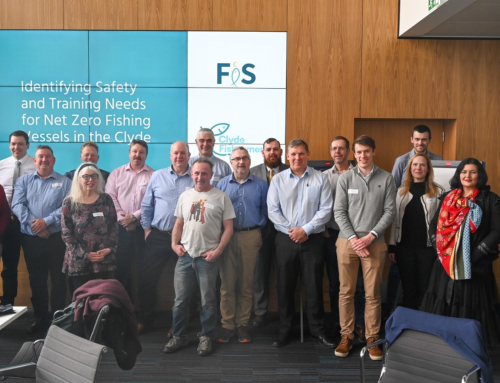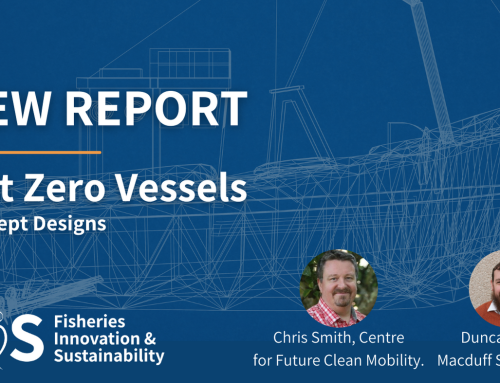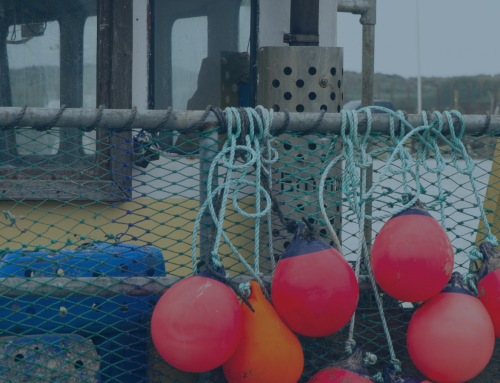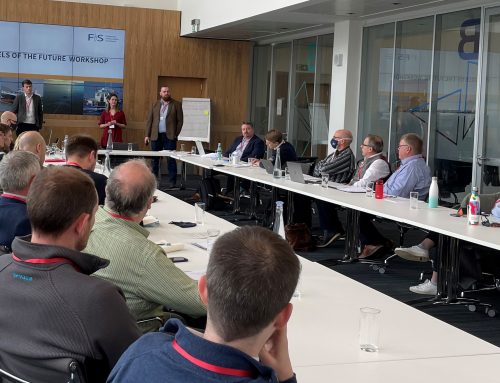Following on from the FIS Vessels of the Future workshop earlier this year, FIS and the Fishmongers’ Company’s Fisheries Charitable Trust invited James Duthie Jr, a skipper and naval architect from Fraserburgh, to participate in a knowledge exchange with Norway. James travelled to Norway to see innovations in reducing vessel CO2 emissions, meet some key players in the Norwegian vessel sector, and consider how we could apply Norwegian know-how to the UK fishing fleet.
Read his account of the trip below.
Introduction
We have a new challenge that is going to sneak up on the fishing industry. Vessel CO2 emissions. For many years this topic has been banded around in the world media, huge climate summits attended by world leaders and, of course, countless activists have glued themselves to the road; all in the name of saving the planet. It seems now this topic has filtered down to one of the humblest sectors in the UK… fishing.
Following on from Fisheries Innovation and Sustainability’s Vessels of the Future workshop held in Glasgow in April this year, I was kindly asked by FIS and the Fishmongers’ Company’s Fisheries Charitable Trust to go on a knowledge exchange trip to Norway to find out more about what they are doing over there to start tackling this issue. My previous education/career was also a big benefit for this trip. Having acquired a degree in Naval Architecture and Marine Engineering and also spending a number of years working in the Oil and Gas industry as a Naval Architect and latterly Marine Superintendent all while working on our family’s vessel “Sunbeam FR487”, I have become uniquely qualified to understand and develop this topic.
Why Norway?
This was a truly impressive vessel to visit and it was encouraging to see that the owners and crew were embracing this new technology.
Norway as a country is considered to be at the forefront of this issue. For years they have been building ships fuelled with LNG (liquefied natural gas), installing large battery packs to hybridise vessels and even going fully electric in some instances.
Fishing vessel owners in Norway are now also venturing down the route of reducing their emissions. As part of the trip, I arranged to visit the world’s first LNG fuelled fishing vessel “Libas”. Delivered in 2021, it has all the latest technologies fitted and at the heart of the ship, a 350m3 cylindrical LNG tank. The LNG carried on board can be used as an alternative to diesel and has a slightly lower emissions profile. This was a truly impressive vessel to visit and it was encouraging to see that the owners and crew were embracing this new technology. A virtual tour of the vessel can give a sense of the scale.
New engine designs

The vessel “Libas” is kitted with purse seine and trawl equipment.
Following on from the visit to “Libas” I visited Wartsila, a supplier to the marine and energy markets for more than a century. Wartsila were kind enough to host me and a team of engineers from Salt Ship design and present what their future products will be. Wartsila are one of the top engine manufacturers in the maritime sector and are progressing well with engines that can run on LNG, methanol, ammonia and hydrogen. Their LNG engine is already on the market and they have also developed and designed specialised storage and handling systems for these alternative fuels.
The meeting with Wartsila then led to a discussion with Sustainable Energy, a Norwegian catapult centre. Their primary purpose is to help develop the technologies in Norway to assist the maritime industry in reducing emissions from ships. It was noted that this was actually modelled on UK catapult projects.
The day was finished off with a visit to Energy House, a test centre used by Sustainable Energy and a number of industry partners (Wartsila Included) to test the latest technologies for reducing emissions from ships. The main project being set up in Energy House was a Wartsila engine that can run on ammonia. They will soon be commissioning the test unit and slowly ramping up the testing of the engine running on ammonia. One way to describe Energy House was “an engineers’ playground”. Not my words but it rang true. Everything was at the leading edge of technology and there were even some parts being developed as a direct result of the projects. And of course, all with the assistance of Norwegian companies.
So now that we have had a glimpse of what Norway is doing, how do we in the UK catch up with a specific emphasis on the fishing industry? The answer is – with great difficulty.
Next steps for UK vessels
The current focus of net zero or low emission shipping has been on larger vessels in the merchant shipping industry and a fair bit of short sea route vessels, such as passenger/car ferries. Merchant ships have the space to install machinery capable of running and storing large quantities of alternative fuels. The associated shipping companies will also have the ability to pass on increased costs to their customers who are ever more demanding of net zero solutions for their products. Passenger/car ferries on short sea routes can take advantage of having a fixed route over a long-term period. Fuelling could even be carried out daily. Pure electric ferries can even be charged each time they dock at the terminal.
Transferring that to the UK fishing industry is a unique challenge as fishing vessels don’t fit into the mould of the merchant shipping industry where the technology has focused on larger systems and some short sea routes. UK policy will also be focused on the big picture in terms of reducing maritime shipping emissions. Fishing is only now starting to be mentioned in the UK’s policies regarding this topic.
To get the ball rolling in the UK, it would be prudent to actually design concept vessels that are capable of running on alternative fuels. This way you can benchmark the designs against what is currently the status quo of vessel design. This can then be gauged against a number of points. These points can be either technical, financial, or regulatory.
Technical
A technical benchmark will determine if the solution can actually be achieved. There are technologies available for alternative fuels but it is imperative that these are assessed for their suitability for fishing vessels specifically.
Financial
A financial benchmark will determine if the solution is even feasible for a vessel owner. Currently, the technology to operate on alternative fuels is incredibly expensive and the fuels themselves cost far more than what is currently widely used. Reaching a point at which alternative fuels match or outcompete existing fuels will be essential in incentivising uptake.
Regulation
The concept designs can then be benchmarked against the current rules that fishing vessels are built, operated and crewed under. From this we would be able to see what rules are lacking and what needs to be changed to make this a reality.
These benchmarks should be key to assessing if this is possible in the fishing industry.
- The technical solutions must be suitable for a fishing vessel to install and operate.
- The financial benchmark should assess if the solutions are viable for a vessel operator. There is no point in building or modifying a vessel if there is no hope of financial viability.
- The regulations that fishing vessels operate under, be it fishing regulations, safety requirements or technical codes for vessel design, must all be suitable for what is being built or operated at sea.
The benchmarks are inherently linked to one another. Choosing the wrong technical solution can have serious financial implications. Any particular technical solution may then require further regulation and rules to be applied. In most cases this calls for increased costs. All three of these benchmarks – possibly even more – need to be satisfied in order to successfully see a transition to the utilisation of alternative fuels.
For progress to be made, a huge amount of time and research is needed to gauge all of this. This should not be rushed. If a wrong move is made, serious consequences could be foreseen, the most serious being the entire viability of the fishing industry. Unlike the merchant sector, the fishing industry cannot simply increase prices to compensate for increased costs. We are at the mercy of the market. If the market is not willing to pay then you will have to accept what is offered. What is offered may not be enough to cover the increased costs of reducing reliance on traditional fuels.
So, how do these concept designs start? Simply put, a willing ship designer, time, a little bit of money to cover the cost, a group like FIS to bring people together, and possibly a university to help things along. And, of course, people within the fishing industry who can advise if the vessels would be feasible. It sounds very simple in those few sentences, but in reality, a complex task. There are so many new rules, concepts, technologies, challenges etc associated with alternative fuels that it will end up being a forever-changing design process.
Short-term solutions
We also have to consider that this process will take a significant period of time to come to fruition. It may be prudent in the meantime to look at things that can be done now in terms of reducing vessel emissions. One point that instantly springs to mind is the archaic limitations with respect to fishing vessel size. Fishing vessels are both limited in size by the gross tonnage held by an owner on the license and, in some cases, limited by length. Limitations are also found when some owners consider certificates of competency for crewing vessels. They may choose to build a shorter vessel because of this.
Why is this a problem? Short vessels are far less fuel efficient than longer streamlined vessels. This comes down to basic hydrodynamics. Therefore, allowing owners to build larger vessels without these restrictions would help greatly in reducing emissions from vessels. Owners may also consider lengthening older vessels.
This is also directly beneficial in terms of lower fuel usage. Less fuel also means less cost for the vessel. A win-win. If done right you can reduce fuel consumption and therefore exhaust emissions by a significant margin.
We should also not worry about the size of the fishing fleet growing because of this. Quota is now the limiting factor in terms of catch taken from the sea. These rules are also a relic of the UK’s membership of the EU. Surely, we can now scrap these unwanted rules and match our Nordic counterparts.
My fact-finding trip to Norway was eye-opening, not just about the technologies available but also the skills and investment needed to make it a reality. If the UK is to follow in Norway’s footsteps, the fishing industry needs significant technical and financial support to make the necessary changes in ways, and timescales, that truly work for our business of fishing.
